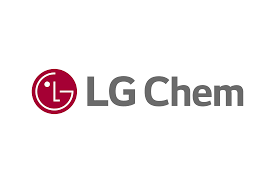- Admin
- Oct 19, 2024
- Buying Guides
- Read: Small Medium Large
LG Chem Pioneers Means To Suppress Battery Thermal Runaway
LG Chem’s Platform Technology R&D Team has developed a temperature-responsive SRL which suppresses thermal runaway, mitigating one of the biggest EV risks
On the 30th of September LG Chem made an announcement that's making waves in the world of EVs.
The organisation's Platform Technology R&D team has developed a solution to thermal runaway, a leading cause of EV battery fires.
Thermal runaway happens when the anode and cathode inside EV batteries come into direct contact, instantaneously causing a short circuit and generating powerful levels of heat.
Within seconds the temperature can rise to nearly 1000C, creating a fire.
LG Chem's solution to this is a thermal runaway suppression material that quickly blocks the reaction path at the early stages of overheating.
This is a composite material that rapidly changes its electrical resistance based on temperature, acting as a "fuse" that blocks the flow of electricity in the early stages of overheating.
In both battery impact and penetration tests, batteries equipped with the material either did not catch fire or quickly extinguished the flames that did appear.
The material successfully prevented a full-blown thermal runaway event, making it a game-changing innovation for the EV sector.
After testing, the material was analysed by LG Chem in collaboration with Professor Lee Minah's team from the Department of Battery Engineering at POSTECH.
Safety verification was also conducted in partnership with LG Energy Solution.
The research findings were published online in the September edition of Nature Communications, one of the world's leading scientific journals.
Creating this material was a lengthy scientific process, bringing the most talented minds at LG Chem together.
How this solution was created
The thermal runaway suppression material was created in the form of an extremely thin layer, just 1 micrometer thick- about one hundredth the thickness of human hair.
This material was positioned between the cathode layer and the current collector (an aluminum foil that acts as the electron pathway) in the battery.
How the material works is as follows: when the battery temperature rises above normal range, so between 90°C and 130°C, the material alters its molecular structure in reaction to the heat and effectively suppresses the flow of current.
The material itself is highly responsive to temperature, with its electrical resistance increasing by 5,000 ohms (Ω) for every 1°C rise in temperature.
Its resistance is over 1,000 times higher than that normal temperatures.
It also features reversibility, meaning the resistance decreases and returns to its original state, allowing the current to flow normally again once the temperature drops.
Backed by LG Chem's expertise and patented material design, this material could soon be present in mass production processes massively advancing the EV sector.
"This is a tangible research achievement that can be applied to mass production in a short period of time," says Lee Jong-Ku, CTO of LG Chem.
"We will enhance safety technology to ensure customers can use electric vehicles with confidence and contribute to strengthening our competitiveness in the battery market."
Why is thermal runway such a problem?
Thermal runaway in EV batteries is a major issue because of the severe safety risks and performance impacts it can cause. It refers to a situation where a lithium-ion battery, commonly used in EVs, experiences a rapid, uncontrollable increase in temperature, leading to a chain reaction of heat and potentially catastrophic failure. Here’s why it’s a big concern:
1. Safety risks
Fire and Explosion
During thermal runaway, excessive heat can cause the electrolyte in the battery to ignite or lead to gas build-up, potentially resulting in fires or explosions. These fires are difficult to extinguish, and even if a fire is suppressed, the battery can re-ignite due to internal heat generation.
Toxic Gases
When lithium-ion batteries overheat or catch fire, they release toxic and flammable gases such as hydrogen fluoride, posing significant risks to passengers and first responders.
2. Heat propagation & chain reaction
Cell-to-Cell Propagation
EV batteries consist of many cells. If one cell goes into thermal runaway, it can rapidly spread to adjacent cells in a domino effect, exacerbating the problem and making it harder to contain.
Uncontrolled Energy Release
A large amount of energy stored in batteries can be released in seconds, increasing the severity of the failure.
3. Battery degradation and efficiency loss
Reduced Battery Life
High heat accelerates battery degradation, reducing the overall lifespan and efficiency of the battery. This can lead to poor performance and reduced driving range over time.
Efficiency Issues
Even if thermal runaway is prevented, excessive heat can reduce the performance and charge efficiency of the battery, affecting EV reliability.
4. Impact on vehicle performance
Sudden Power Loss:
Thermal runaway can cause abrupt power loss or battery shutdown, putting drivers at risk of losing control of the vehicle while driving.
Limited Charging Speed
Heat management becomes critical when fast-charging EVs, as overheating can occur. To avoid thermal runaway, charging rates are often throttled, which impacts charging times.
5. Challenges in prevention & mitigation
Cooling Systems
EVs require sophisticated battery cooling systems to manage heat during operation and charging. These systems add weight and complexity to EV designs.
Cost of Safety Features
Manufacturers must invest in thermal management systems, sensors, and protective designs (e.g., fire-resistant materials) to reduce the risk of thermal runaway, which can increase the cost of the vehicle.
6. consumer concern
Public Perception
Several high-profile incidents involving thermal runaway fires in EVs (e.g., Tesla and other EV models) have drawn attention to the issue, causing concern among consumers about the safety of these vehicles.
What's next after mitigating thermal runway?
Mitigating the risk of thermal runway is a huge victory for the EV sector.
Without we have safer, more efficient EV's- with far longer lasting batteries.
Tackling consumer concerns and misconceptions surrounding EV technology will be critical to drive broader adoption.
By mitigating the risk of thermal runway, LG Chem are helping to make this possible.




